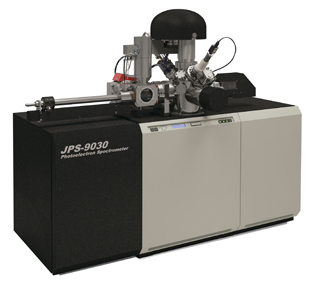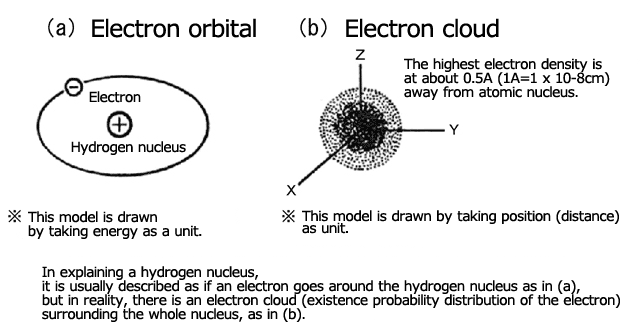X-ray Photoelectron Spectrometer
We give you full support

Features
(1) This is a surface analysis instrument to analyze to a depth of several nanometers beneath the specimen surface.
(2) It can provide qualitative and quantitative analyses from Li to U, chemical bonding state analysis.
Peeking into the micro world
X-ray Photoelectron Spectroscopy (hereafter: XPS) has been used as a highly versatile analytical method in material research and development, as well as quality control. The photoelectron spectrometer is used in a variety of applications, from universities to factories, as a research tool that is simple to use and allows for routine analyses.
Observation of Bonding States of Atom and Molecule
XPS is a technique for viewing a world even smaller than that visible with an electron microscope. “How can that be?” you may wonder. “How can anything smaller than an atom or a molecule be seen?” Of course, it is not the same as looking at a photograph. Nonetheless, by measuring the speed of electrons emitted from within a material when exposed to x-rays (called photoelectrons because they are emitted when the material is exposed to light), it is possible to observe the tiny world inside an atom or molecule.
Photoelectron spectroscopy is the measurement of the speed of these photoelectrons, and chemical state analysis is the analysis of the obtained spectra to determine the bonding state of atoms and molecules.
Chemical State Analysis
Identifying the dating partner based on clothing An atom is made up of a nucleus and electrons. It is common to see a diagram of electrons revolving around the atomic nucleus like planets orbiting the sun. In reality, electrons form a cloud around the nucleus rather than revolving in orbits. So imagine that an atom is covered in electrons.

Let us now consider our daily lives. You may wear a business outfit to work. A salesperson wears a suit when visiting a customer, but on a day off, he or she may go out in a T-shirt. We dress appropriately for the situation and circumstances. In fact, an atom behaves in a similar manner. A molecule is formed when an atom bonds (dates) with another atom. To form the bond, the atom changes the form of the outermost electrons depending on the dating partner. To put it another way, if the dating partner changes, so does the clothing.
Application Example of Photoelectron Image
Commercially available DVD-RW discs typically have a structure similar to the one shown in the figure on the right. When the surface of a DVD disc is stripped, the recording layer and dielectric layer are exposed. The data shown in the figures were obtained as a result of acquiring photoelectron images while three different types of layers were exposed.

A specimen tilt method (Angle resolved XPS, ARXPS) is available to obtain the composition and chemical bonding state changes from the top surface to several nm beneath the surface. This method is unique to XPS and can be used to measure surface composition and chemical bonding state changes at a nano-order.
